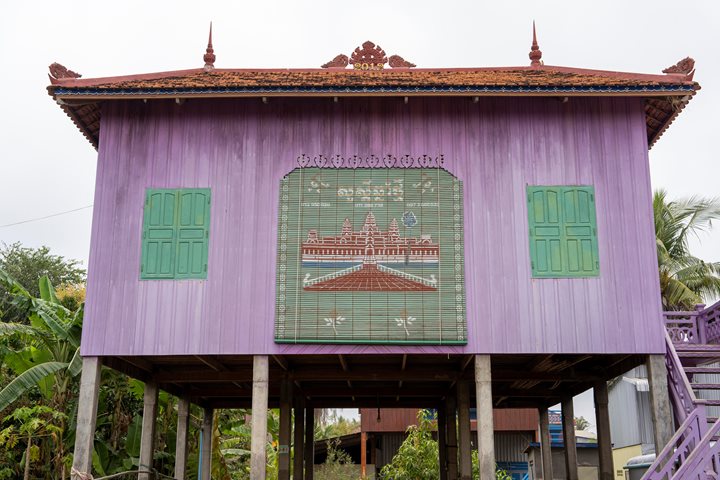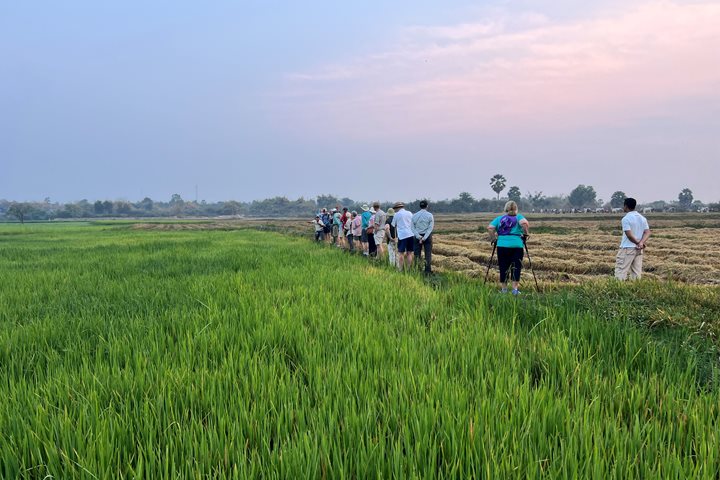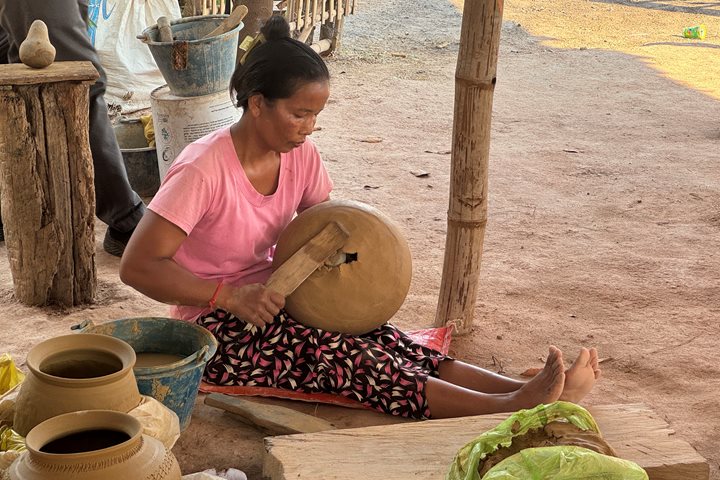Kampong Cham –Siem Reap
At 5:30am the fisherfolk, mainly the Cham, are out again on the Mekong River just up river from the Friendship Bridge at Kampong Cham to try their luck at fishing. It is the last day before the full moon. At least sixty boats are out there working in pairs with a large net between them. It is a rhythm of setting out the net, waiting and a sudden frenzy of 10 to 12 people, adults and children, hauling up the net. This routine is repeated over and over again as far as we can see.
Shortly after 8am, after saying our goodbyes to the wonderfully friendly Jahan crew, we are on our way to Siem Reap with two new guides. There is a lot to see en route from a large privately owned rubber plantation to busy market villages. The dry season is a perfect time after the rice has been harvested in December for weddings, celebrated in pink and yellow festooned tents, house building and roof repairing. Our guide mentions the interesting fact that the Khmer adhere to the matri-local system, which means that after the wedding the groom moves to the bride’s family.
Nearing Siem Reap the traffic becomes more congested and lively markets are on both sides of the road. A French architect designed our hotel, La Residence d’Angkor. Both the entrance and lobby are airy teak constructions in traditional Khmer style. Lunch is waiting for us after our bus trip. Even those who are not interested in desserts have to taste the delicious dark chocolate mousse.
To get a first taste of the temples in the large Angkor Archaeological Park, we explore the extensive late 12th century temple Ta Phrom, built by the great Buddhist king Jayavarman VII to commemorate his mother. It is known as the jungle temple as the French archaeologist decided in the first half of the 20th century to leave this ruin temple, overgrown and embraced by gigantic strangler fig and silk cotton trees, as was found. The idea is to just stabilize walls and entrances, so that no further damage occurs and to make it safe for the visitor. However, recently some restoration of a gateway, the causeway and some galleries has been undertaken by the Archaeological Survey of India, which has funded and carried out the project with about one hundred Khmer workers. The high pitched sound of the cicadas was interrupted only by the screeching sound of red-breasted parakeets.
An elegant dinner served on the terrace of the hotel ended another very interesting and enjoyable day. By 9pm most people had left to get some sleep before the early morning departure the next day.






